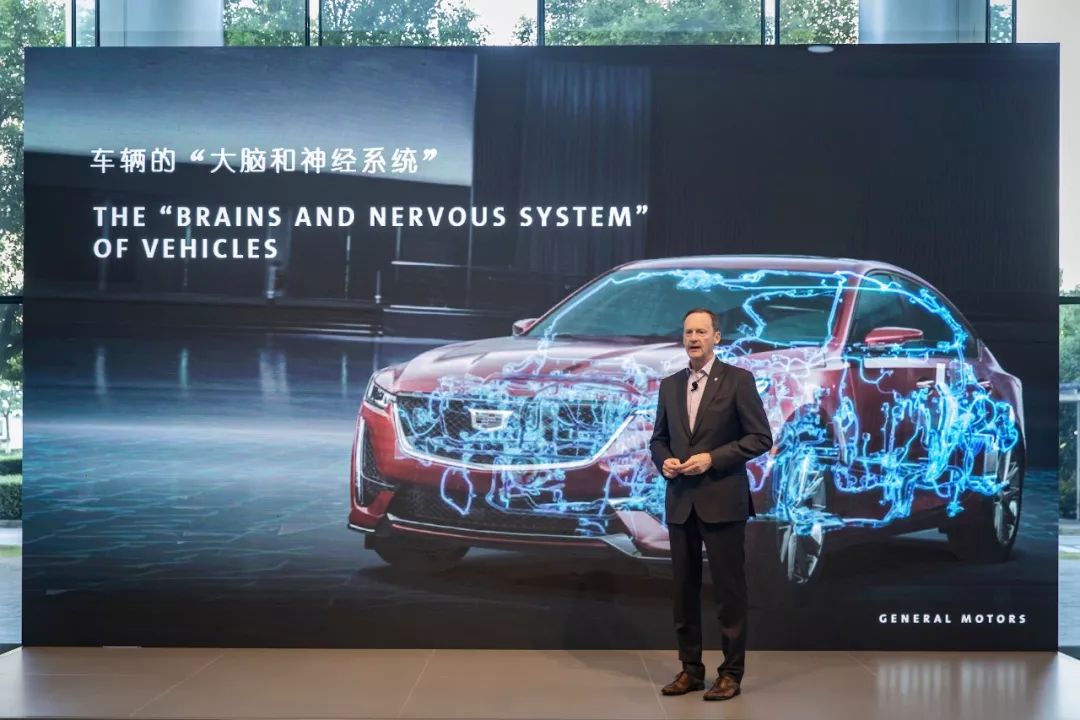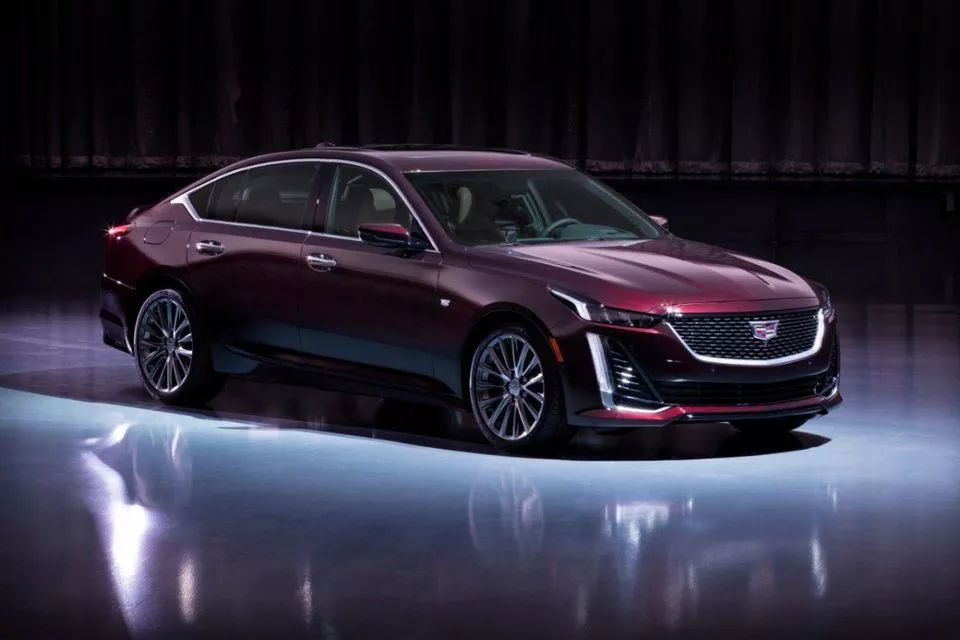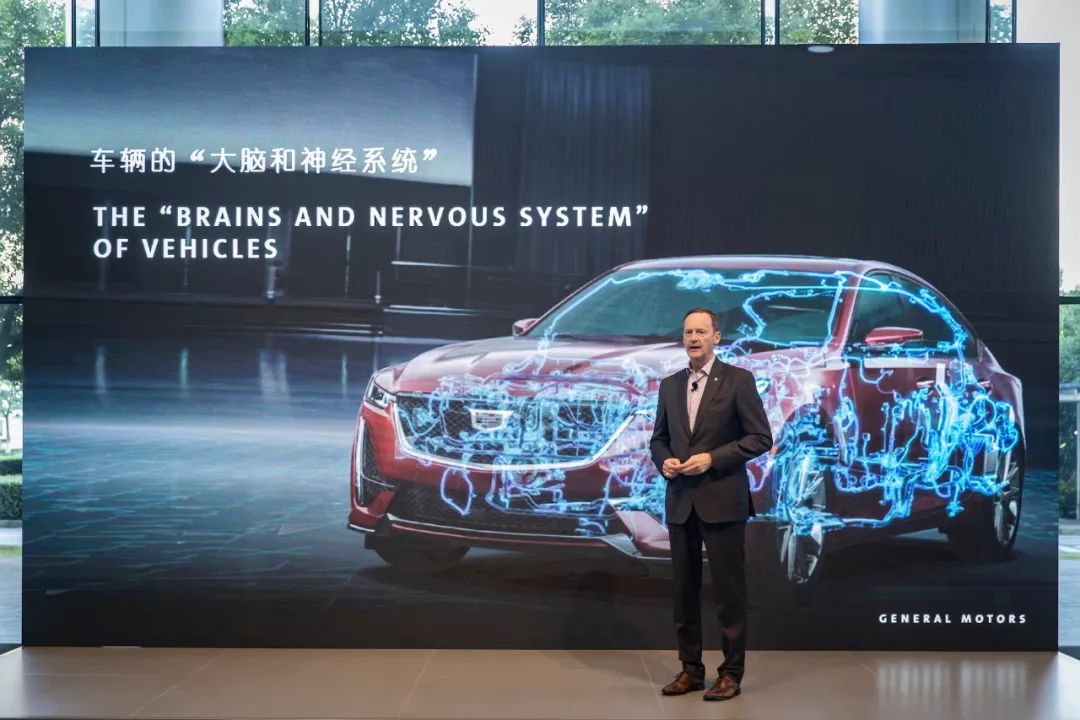In just one month, the Cadillac CT5 will be available on the market. For consumers, the significance of this model lies in the new position of Cadillac in the B-segment luxury car market. What consumers may not know is that the expected intelligent driving experience of this car is related to the optimized Global B electronic electrical architecture of General Motors.
The electronic electrical architecture is so important that if the computing chip is the brain of the intelligent car, then the electronic electrical architecture is its nervous system. In the May 20 announcement, General Motors stated that the new generation of electronic electrical architecture will provide system-level support for “electrification, active safety, in-vehicle entertainment, intelligent interconnection, and Super Cruise technology upgrade” in future automotive product development.
Safety, Safety, and Safety
On September 27, Dan Nicholson, Vice President of Global Electrification Products, Systems, and Software and Hardware at General Motors, introduced the General Motors Global B electronic electrical architecture at the General Motors China headquarters. This long title is interesting. According to Dan in a media Q&A, the Global B architecture of General Motors was jointly developed by more than 300 electrical, software and hardware engineers, and computer scientists from global teams, including General Motors China’s Forward-Looking Technology Center and Pan Asia Technical Center.

In addition to the upgrade of software and hardware, the replacement of electronic electrical architecture also includes technical upgrades of testing and verification tools and the manufacturing end of complete vehicle factories. Dan concluded that the launch of the new generation of electronic electrical architecture is the result of cross-departmental cooperation. In fact, General Motors does not use the lengthy title “Vice President of Global Electrification Products, Systems, and Software and Hardware” internally, but instead calls Dan the “Head of the cool stuff.”
Integrating all electronic electrical-related businesses together provides an opportunity to maximize research and development resources and achieve synergy as early as possible in the R&D stage. According to Dan, this approach is not common in the industry, and in fact, it epitomizes General Motors’ transformation.
Dan’s speech repeatedly emphasized the improvement of safety in the new architecture. What is not known is that General Motors’ previous generation Global A architecture, which was established in 2000, already covered two major security modules: functional safety and network security.
As early as 2015, when Mark Reuss was the head of Global Product Development at General Motors, he emphasized the importance of security when discussing the Golbal B architecture.> Regardless of the present or the foreseeable future, the critical role of software and its importance to our vehicles cannot be underestimated. However, at present, we do not perform OTA updates on key systems involving driving safety such as brake systems.
After the release of Global B, Al Adams, the Director of Global Electrical and Electronic Architecture at General Motors, clearly stated that “components and systems can be updated and improved throughout the entire life cycle of a car, and electrical and electronic architecture is the next battlefield in the automotive industry.”
According to General Motors, Global B will establish physically independent safety hardware to completely address safety risks from both software and hardware. Considering General Motors has been continuously investing in network security in recent years, we can cautiously assume that General Motors has solved the potential risks brought by whole vehicle OTA.
For any automaker, emphasizing the safety of electrical and electronic architecture is a standard operation. In this context, General Motors has made a differentiation and turned safety into its tagline, which is particularly impressive. Dan stated in an interview that “safety first” is General Motors’ primary principle, which is implemented across all departments, including product safety, working environment safety, and network information security.
“On one hand, General Motors needs to ensure that the functionality of the architecture itself is realized, on the other hand, it needs to ensure that the software system controlled by it can operate accurately as designed.” Dan said, “Through extensive testing and R&D work, our new generation of electrical and electronic architecture can provide consumers with a more reassuring product and experience with comprehensive network information security protection.”
Considering the long development cycle of Global B electrical and electronic architecture and the changing external competitive environment, it can be said that General Motors may sacrifice some other things, such as first mover advantage, to achieve the defined safety.
High Performance & Scalability
Regarding the motivation for developing Global B, Dan points to the drive of technological development. General Motors hopes to design an electrical and electronic architecture that is safer, more iterative, and has stronger data processing capabilities to drive the landing of intelligent vehicles.
In addition to safety mentioned earlier, Global B fully supports whole vehicle OTA, and its data management and processing capabilities have been upgraded to 4.5 TB/h, which is five times higher than the current Global A. The motivation behind it is obvious, as Mark said that the massive sensor data generated by cameras, lidars, and V2X on autonomous vehicles has been prepared through Global B.

In Dan’s opinion, this is the biggest challenge faced by the new generation of electronic and electrical architectures. General Motors needs to comprehensively debug the system and integrate various applications together. “One of the key factors to ensure the network security of the electronic architecture is information verification. This is like a common language between controllers. Not only do they need to be compatible, but they also need to communicate using encryption. Without accurate information verification, they will refuse to communicate,” Dan explained.
“Scalable” is another label of Global B, which differentiates it from other multinational automotive giants and startups. When asked about the domain controller and cable length of Global B on the spot, which is the most direct and effective way to reflect the advancedness of electronic and electrical architecture, Dan replied that the topic of whether it is a domain controller or a central controller is very complicated and there are also some misunderstandings in people’s understanding.
In his opinion, the new generation of electronic architecture in General Motors is a hybrid architecture, which supports cross-brand applications under General Motors across the globe on different car models, effectively optimizing the global product lineup. For General Motors, this is the best solution. In other words, the data indicators of Global B on different car models may be different.
But what can be affirmed is that the new generation of electronic architecture has successfully reduced the number of controllers through system integration, which is also a trend in industry development. Compared with the previous generation of electronic architecture, the new generation of electronic architecture with the same Super Cruise driving assistance function and even L3 autonomous driving function is more concise and efficient. “Moreover, this is an expandable architecture. If different car models want to add or reduce different functions, we can selectively deploy them,” Dan said.
Finally, returning to the Cadillac CT5, this car will be the first model under the Global B architecture, and the SuperCruise, which is highly anticipated by General Motors and supports automatic lane change function, will also debut on the CT5.
To sum up, although it is not an electric vehicle, the role of the Cadillac CT5 in terms of technological aspects other than the powertrain is similar to that of the Porsche Taycan and Audi e-tron during the transitional period of the integration of old and new technological systems of the giants.
As Dan mentioned in his speech, software has become the latest battlefield in the automotive industry and it is key for automotive companies to maintain their competitiveness. Let’s see how Global B evolves in the next decade.



This article is a translation by ChatGPT of a Chinese report from 42HOW. If you have any questions about it, please email bd@42how.com.
